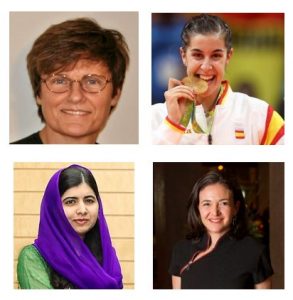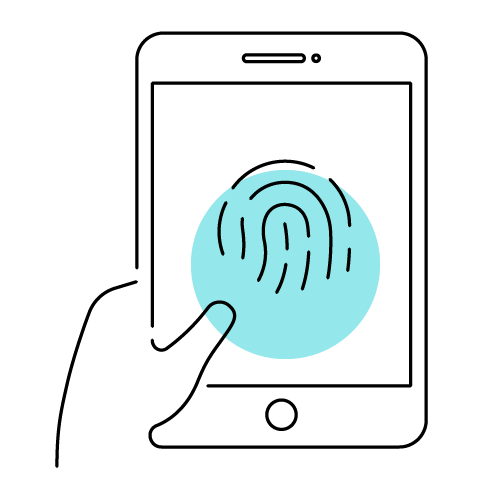Imagine a gender equal world. A world free of bias, stereotypes and discrimination. A world that’s diverse, equitable, and inclusive. A world where difference is valued and celebrated. Together we can forge women’s equality. Collectively we can all #BreakTheBias. Celebrate women’s achievements. Raise awareness against bias. Take action for equality.
I took this introduction from the International Women’s Day website as I couldn’t improve upon it. I think we can agree that it’s a world we’d like to live in and one that’s worth fighting for. To create it, we’ll need to educate our children and indeed ourselves in the values above. In this blog post, I’d like to look at some of the things we can do as educators, parents and as people to try to make it a reality.
Before getting practical, let’s take a quick stop-off at the LOMLOE, the new Education Law in Spain. Educating our children in the values above is not only a praiseworthy aim, but also the law.
One of the five pillars of the LOMLOE is the following:
Ensuring gender equality, preventing gender violence, respecting diversity and ensuring an inclusive and non-sexist education.
And rather than this just being a lofty, theoretical aim, these values find their way into the descriptors for the different key competences.
In the linguistic competence for example, one of the descriptors for what a student should be able to do on leaving compulsory secondary education is
Puts their communicative practice in the service of … the resolution of conflict through dialogue and the equal right of all people, rejecting sexist, racist and classest use of language…
The soft skill of resolving conflicts peacefully using dialogue is especially poignant I think you’ll agree. One worth developing from an early age everywhere in the world. In the citizenship competence we see that a student should be able to:
Participate in community activities, in decision making and conflict resolution constructively, peacefully and with a democratic attitude ground in human rights, cultural diversity and gender equality…
Let’s pick a term from the first descriptor: sexist language. This 3-minute video from 2014 is a brilliant example of the destructive power of language to create stereotypes and prejudice. Please give it a watch!
It’s incredible to see what the adults – who have learned prejudice – do, and what the children – who haven’t yet – do, when instructed to ‘Run like a girl’. As one of the comments below the video says “This was not just a commercial, it is a life lesson and I wish every person could get to see it.” The video is a great way in to a discussion on sexist language and prejudice. Another sexist expression I’ve heard a lot over the years is ‘Man Up‘ – still said to boys to get them to stop complaining and ‘toughen up’. It’s wrong on a number of levels: it’s reinforcing the stereotype that being tough and being able to take problems on your shoulders is a masculine trait: girls who hear it will get that message. It’s damaging for boys too: it implies boys shouldn’t have to talk about problems and feelings: that’s for girls. Boys should just get on with it. Trying to move away from chest-beating masculinity in the future would benefit us greatly, as we can see today.
Other sexist language can include automatically using the subject ‘he’ when talking about, for example, an engineer (giving girls the message it’s a job for boys) or using a term like ‘lady doctor’ or ‘male nurse’.
Whenever possible we should avoid gendered language: using firefighter instead of fireman, meteorologist for weatherman or flight attendant rather than stewardess. And as a teacher, as well as paying attention to our language, we can also call it out when it appears (from our students, in a video or text) and talk about it with our students.
Celebrating Women’s achievements
One of the focuses of International Women’s Day is celebrating women’s achievements. A good example of this is a project my son took part in recently at his school for the International Day of Women and Girls in Science on 11th February.
The children (in the second year of primary school) were individually given someone to research (Margaret Hamilton, Marie Curie, Maria Monstessori – which was who my son got). At home we decided to read him some passages from books on Montessori and he had to say what he thought the most important points were (getting the mediation strategies in early!) and then write them down.
He then took his notes to school and the teachers had the students compare notes with three other students who had been assigned the same woman or girl in science. Each group then had to pool their research, make a poster and present it. Click to see the details:
Resources I’ve prepared on the topic of celebrating women’s achievements include this lesson for secondary students celebrating these four inspirational women from very different walks of life: do you know them all?
Download the lesson in word format here Celebrating achievements – student worksheet and Celebrating achievements – teacher’s notes.
I’d also like to share this set of posters: printing and displaying them is a great way to celebrate women’s achievements, plus the texts can be exploited and they can be an inspiration for further research. They’re a slideshow here, but you can right click and open them in a new tab to enlarge them, then download them.
The official International Women’s Day website also has some great resources for your students, including activity cards which are essentially 16 different activities, colouring sheets with inspirational women and motivational quotes and a very funny but poignant video for teenagers on ‘swapping genders for a day’.
Pearson’s publishing guidelines
Pearson has long since been committed to inclusivity and equality, and we are the world’s first learning company to create gender equality guidelines These guidelines, developed in close collaboration with the Fawcett Society are used to develop all coursebooks, digital resources and qualifications. To read more about them click here and to download the full guidelines click here. As the guide states ‘The word choices, charts, graphs, illustrations and photos used in our materials all have the power to shape thinking and reinforce beliefs about gender roles…this matters because stereotypes limit children by presenting them with a specific set of acceptable behaviours.’ For materials creators looking to create balanced gender representations, the guide is very useful. Pearson also has longer teacher training courses available for educators looking to create an equitable classroom, free of prejudice and with respect for diversity.
#Breakthebias
Finally, the theme of International Women’s Day 2022 is #breakthebias and you can show your support by striking the pose and sharing the photo on social media under the hashtag above. Join me:






